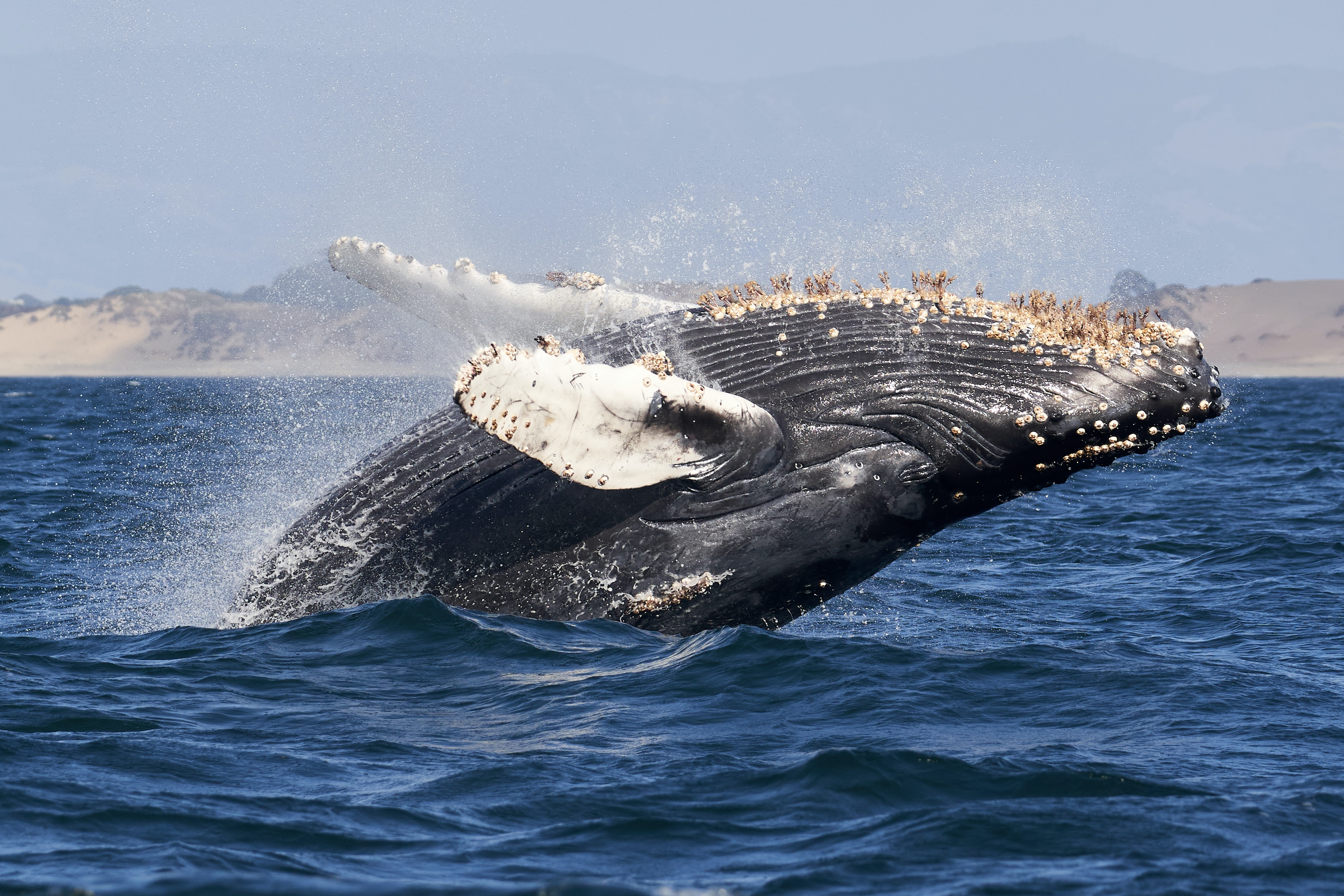In order to be able to feed in waters over 1,500 m deep where light is absent, the sperm whale is equipped with a long-range echolocation system. It produces unidirectional clicks of 235 dB re 1 μPa (underwater pressure unit: decibels with respect to 1 μPa), which is comparable to the sound of a powerful air rifle at a distance of 0.5 m. It’s the most powerful sound in the animal kingdom. According to researchers from the Journal of the American Cetacean Society, the force of this sound would enable the sperm whale to identify cephalopods, the basis of its diet, at depths of up to 500 m. From the moment it dives, it begins to send out sound clicks, quickly locates prey and makes a beeline in that direction. The closer it gets, the more the interval between clicks decreases, i.e. the sounds become increasingly frequent. These powerful sounds might even stun its prey.
The sperm whale, like many other species of toothed whales, uses the prominence atop its head, like the melon in belugas, to emit sounds into water like a sonar. The sperm whale’s prominence is “hypertrophied” (enlarged) and is called the spermaceti organ. The sound is emitted at the end of the rostrum, near the blowhole, from the phonic lips (a.k.a. “monkey lips”), and is believed to be transmitted through the spermaceti organ, an oil-filled “sponge”, before finally being sent out into the water. It was historically believed that the sperm whale was incapable of echolocation and that its enormous snout was instead an organ used to manage buoyancy; recordings of sperm whales revealed a sound power level of about 180 dB re 1 μPa, which is comparable to the sound of a porpoise. However, one must be within 10° of the front of a sperm whale’s head to appreciate the intensity of its unidirectional click.
Dolphins, belugas and beaked whales are also masters of echolocation thanks to the melons on the tops of their heads, although the range and power of their systems are not as impressive as that of sperm whales. For example, the common bottlenose dolphin can locate targets just over 110 m away, which is impressive for an animal that hunts near the water surface. American researchers have also noted that beluga sounds travel forward in a narrower and more directional beam than that of dolphins, which is attributable to the animal’s melon, which can be deformed depending on the intensity of the emitted sounds.
Toothed whales are very vocal animals. They emit sounds not only when navigating and hunting, but also to communicate between members of the same species or even within their own families, as social cohesion is very high.





